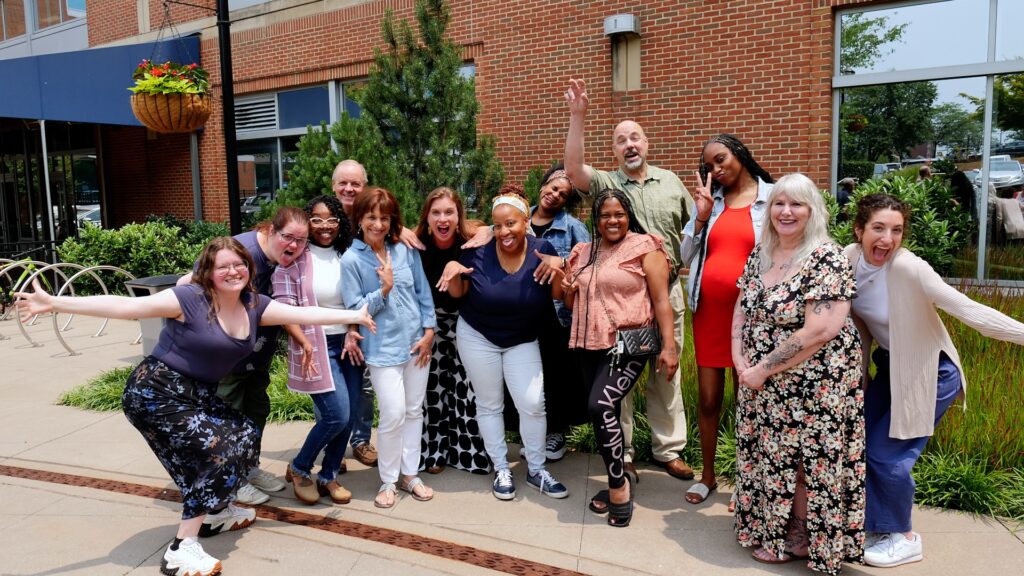
The Goldilocks Rule states that humans experience peak motivation when working on tasks that are right on the edge of their current abilities. Ones that are not too hard. Not too easy. But just right.
A task or goal that is too easy doesn’t provide any challenge and quickly becomes a chore. And we all know how easy it is to put off chores. (Reorganizing your closet, anyone??) If something is so hard that you can’t see any immediate improvement or progress at all, you’ll simply quit. Your brain knows you can find something easier to accomplish, and brains love the dopamine rush that comes with accomplishment. So how do you find that just right task? Many experts refer to these as stretch goals…something that’s a little beyond our current skills, but something we can envision accomplishing.
For example, several years ago, I decided to run a half-marathon. A bit over thirteen miles. I was a casual jogger at the time, and certainly not ready for that distance. That’s when I realized interim goals are crucial. I didn’t start out running 10 miles a day. I started by running around the block in my neighborhood. Then I ran two houses further. Then five houses further. Then another block. Then another mile. I could see progress, and that kept me motivated. Always remember to include some interim goals in your skill-building plans.
Mastery requires practice. There’s no way around this. Studies have shown that it takes 10,000 hours of practice to master something like playing the piano or ice skating or graphic design. You can have raw talent, but practice is what turns talent into skill. Practice trains your brain and muscles until they work together like a well-oiled machine. As the old saying goes, “practice makes perfect.” Practice lets you do something without having to think about every step in the process. There’s just one challenge…practice can be boring. And boredom is perhaps the greatest villain on the quest for self-improvement. Lack of practice is why many people with plenty of raw talent fail to achieve their goals or significant success. People who master anything have found a way to make practice rewarding, even if it might not be fun. They’ve found a way to beat practice boredom.
So how do we keep boredom at bay? We fall in love with it. We become endlessly fascinated by doing the same thing over and over. We deliberately look for those small improvements or changes that mean progress. Are those piano scales getting easier to play? Do your fingers move faster over the keys? Do you miss fewer notes? Do you notice your workout getting a little easier each day? Can you lift a bit more weight this week than you could before? Progress equals success.
Of course, it never hurts to vary your routine a bit. I don’t jog the same route every day. Sometimes I listen to music while running…other times I listen to a podcast. Or simply enjoy a lovely day and soak in my surroundings. Whenever you’re working on a task or skill that’s just a little bit challenging, remember to switch things up now and again to keep boredom at bay. You do you. But whatever you do, find a way to identify and focus on those tasks that are just hard enough. Like Goldilocks, you’ll find what’s just right.
Stay Sharp,

Holly Hayes, President & Founder
ISI Consulting
PS – Sign up for our March IN-PERSON two-day facilitation training in beautiful Charleston, SC.

With all the excitement lately around Artificial Intelligence (AI) and the use of Chat GPT, there is one area where I hope you do not use AI – and that is identifying what your community believes about an issue or problem they are trying to solve. Don’t take any shortcuts on this. Period. There is no way on earth that AI can understand and experience the connections between individuals and within a community. That is a uniquely human skill.
One thing that has become abundantly clear over the past few years is that we all need to be active in the community engagement business. We have lost communities of all sorts – neighbors, schools, faith groups, shared hobbies, sports and more. At the same time, we’ve developed the habit of talking at or over each other instead of engaging in true back-and-forth conversations. All this has led to a deep sense of isolation and loss of connectedness. It affects us personally and it affects our communities.
To achieve a population-level impact, we must recognize that the issues facing any community are inexorably intertwined. The more deeply we recognize and seek to experience the connections between each other and within a particular community, the more we will be able to uncover hidden resources and innovative ideas.
So many of you are involved in truly exciting projects and initiatives that are in the works or already underway. Please, please make the voice of the community front and center. That voice is too crucial to miss. How might you do this? Build relationships with key individuals impacted by the problem that you’re trying to solve. Listen – and listen again – to their perspective on the issue. Since they are wrestling with the challenge regularly, they have deep and wide knowledge about this. Community members, not AI, will have insight into what is working and what is not working and where changes need to be made.
Keep in mind that we often have a bias toward working with people we already know and feel comfortable around. But are those truly the people with the deepest, day-to-day, boots-on-the-ground knowledge of the challenge you’re tackling? Be willing to step out of your comfort zone and engage those with lived experience to get the kind of insights that will drive meaningful change. It may be difficult and perhaps a bit uncomfortable at first. That’s just fine. Building connections is not instantaneous but the effort is totally worth it. Take the time for listening sessions, focus groups, interviews, surveys and simply building meaningful relationships with individuals to work together to create innovative ideas around shared challenges. You’ll find it’s time well spent.
I know that you can type a question into the AI portal and an answer will be spit out in seconds. That’s fine if you’re looking for a newsletter idea or a good start for your book chapter or next magazine article. Community engagement, however, is much more complex. It’s going to take time, patience, and your undivided attention. Leave ChatGPT to the college kids and term papers.
Stay Sharp,

Holly Hayes, President & Founder
ISI Consulting
PS – Sign up for our upcoming on-line and in-person facilitation trainings.